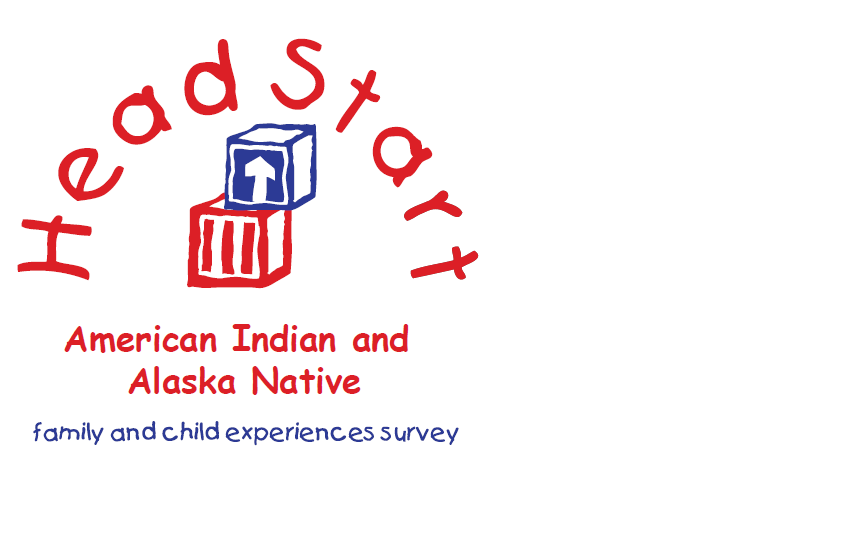AI/AN FACES 2019 Head Start program director survey
OPRE Evaluation: Head Start Family and Child Experiences Survey (FACES 2019) [Nationally representative studies of HS programs]
ATTACHMENT 21_AIAN FACES 2019 HEAD START PROGRAM DIRECTOR SURVEY
AI/AN FACES 2019 Head Start program director survey
OMB: 0970-0151
O MB
Number: 0970-0151
MB
Number: 0970-0151
Expiration Date: XX/XX/20XX


American Indian and Alaska Native Head Start Family and Child Experiences Survey 2019 (AI/AN FACES 2019)
Spring 2020 |

Paperwork Reduction Act Statement: The referenced collection of information is voluntary. An agency may not conduct or sponsor, and a person is not required to respond to, a collection of information unless it displays a currently valid OMB control number. The valid OMB control number for this information collection is 0970-0151 which expires XX/XX/20XX. The time required to complete this collection of information is estimated to average 20 minutes, including the time to review instructions, search existing data resources, gather the data needed, and complete and review the collection of information. If you have comments concerning the accuracy of the time estimate(s) or suggestions for improving this form, please write to: Mathematica Policy Research, 1100 1st Street, NE, 12th Floor, Washington, DC 20002, Attention: Lizabeth Malone. |
Introduction


SURVEY INFORMATION
Mathematica Policy Research is conducting the American Indian and Alaska Native Head Start Family and Child Experiences Survey 2019 (AI/AN FACES 2019) under contract with the Administration for Children and Families (ACF) of the U.S. Department of Health and Human Services (DHHS).
We need for you to complete this brief survey which asks you about your program and staff as well as your thoughts about program management and your background.
Thank you for taking the time to complete this survey. Questions are not always numbered sequentially, so please answer questions in the order they appear, regardless of the question number. Additionally, you may be told to skip some questions because they do not apply to you.
Your participation in the study is voluntary and you may refuse to answer any questions you are not comfortable answering. Your answers will not be shared with other staff in your program, or anybody else not working on this study. Please be assured that all information you provide will be kept private to the extent permitted by law. The information you provide to the study will be protected and will only be seen by selected members of the study team. The survey will take about 20 minutes of your time to complete.
A. Children and Families Served

O1
How many children are enrolled in your Head Start program? Here, we are referring to “cumulative enrollment” or all children who have been enrolled in the program and have attended at least one class or, for programs with home-based options, received at least one home visit. By Head Start we are referring to preschool Head Start, not Early Head Start. |
|||||||
|




A12i
A12h
Does your program serve any children or families who speak a language other than English at home? |
|
|
Yes |
|
No GO TO SECTION AB, PAGE 3 |




Other than English, what languages are spoken by the children and families who are part of your program?
MARK ONE OR MORE BOXES
![]() 35 Native
language(s) – Specify
35 Native
language(s) – Specify
![]()
![]() 12 Spanish
12 Spanish
![]() 21 Other
– Specify
21 Other
– Specify
![]()

AB. NATIVE CULTURE/LANGUAGE IN PROGRAM

These next questions are about use of native culture and language in your program.

Does your program have a cultural/language elder or specialist? By cultural/language elder or specialist we mean someone that you may rely on or consult with in regards to culture or language. Though culture and language are interrelated, sometimes an elder or specialist might only be consulted on one or the other, and not both. |
|
|
Yes |
|
No GO TO AB8 |
AB1



Who is your cultural/language elder or specialist?
MARK ONE OR MORE BOXES
![]() 1 A
spiritual leader
1 A
spiritual leader
![]() 2 An
influential member of the tribal or cultural community
2 An
influential member of the tribal or cultural community
![]() 3 A
member of the tribal or cultural community
3 A
member of the tribal or cultural community
![]() 4 Other
– Specify
4 Other
– Specify
![]()
AB2


AB8
Does your program use a cultural curriculum? |
|
|
Yes |
|
No |
|
|
|
|


AB9
Does your program use a locally designed or tribal specific tool to assess children’s Native language development?
-
 1
1Yes
 0
0No


What kind of Native language program(s) does your Head Start program have?
A full immersion classroom is one where only Native language is used for all interactions and activities every day, without English or another language being used.
MARK ONE OR MORE BOXES
![]() 1 Full
immersion (all classrooms)
1 Full
immersion (all classrooms)
![]() 2 Full
immersion (some classrooms)
2 Full
immersion (some classrooms)
![]() 3 Partial
immersion (Native language used 50% of the time or greater)
3 Partial
immersion (Native language used 50% of the time or greater)
![]() 4 Structured
language lessons (Basic Language)
4 Structured
language lessons (Basic Language)
![]() 5 Teachers
use words in the classroom
5 Teachers
use words in the classroom
![]() 6 None
of these
6 None
of these
![]() 7 Other
– Specify
7 Other
– Specify
![]()
AB14



STOP
CHECK IN HERE
Please read the instructions below to continue the survey.
If you selected that you use a full or partial immersion program in either all or some classrooms, then go to question AB16 on page 6.
Otherwise, please continue to question AB15 on page 5.


Has your program ever had a full or partial Native language immersion program(s)? A full immersion classroom is one where only Native language is used for all interactions and activities every day, without English or another language being used. A partial immersion classroom is one where Native language is used 50% of the time or greater. |
|
|
Yes, we have offered language immersion program(s) in the past |
|
No, we have never offered a language immersion program GO TO AB17, PAGE 6 |
AB15
AB15a



Why are you no longer using a Native language immersion program?
MARK ONE OR MORE BOXES
![]() 1 No
fluent speakers available in the community
1 No
fluent speakers available in the community
![]() 2 No
fluent speakers with training to teach language
2 No
fluent speakers with training to teach language
![]() 3 Limited
support or interest from parents or the community
3 Limited
support or interest from parents or the community
![]() 4 No
teachers speak the language
4 No
teachers speak the language
![]() 5 Other
– Specify
5 Other
– Specify
![]()
GO TO AB17, PAGE 6




What kind of Native language immersion program(s) do you have?
MARK ONE OR MORE BOXES
![]() 1
Full immersion (only Native language is used for all
interactions and activities every day)
1
Full immersion (only Native language is used for all
interactions and activities every day)
GO TO AB17
![]() 2
Partial immersion (Native language used 50% of the time or greater)
2
Partial immersion (Native language used 50% of the time or greater)
![]() 4
Other – Specify
4
Other – Specify
![]()
AB16a
AB16


What percentage of language used in the immersion classroom(s) is in the Native language?
-
PERCENT

Next, we’d like to know about whether and how your program has used the Making it Work framework.


Are you using or have you used Making it Work in your program? |
|
|
Yes, for some classrooms |
|
Yes, for all classrooms |
|
No GO TO SECTION E, PAGE 7 |
AB18
AB17



How has Making it Work been used? MARK ONE OR MORE BOXES
![]() 1 We
developed a new curriculum
1 We
developed a new curriculum
![]() 2 We
developed new activities to add into our existing curriculum
2 We
developed new activities to add into our existing curriculum
![]() 3 We
developed new approaches for classroom activity planning
3 We
developed new approaches for classroom activity planning
![]() 4 We
developed new approaches for developing student goals and plans
4 We
developed new approaches for developing student goals and plans
![]() 5 We
developed new approaches for monitoring and assessing children’s
progress
5 We
developed new approaches for monitoring and assessing children’s
progress
![]() 6 Other
– Specify
6 Other
– Specify
![]()

E. Curriculum and Assessment

E2

What curriculum/curricula does your program use?
MARK ONE OR MORE BOXES
![]() 11 Creative
Curriculum
11 Creative
Curriculum
![]() 12 HighScope
12 HighScope
![]() 14 Let’s
Begin with the Letter People
14 Let’s
Begin with the Letter People
![]() 15 Montessori
15 Montessori
![]() 16 Bank
Street
16 Bank
Street
![]() 17 Creating
Child Centered Classrooms- Step by Step
17 Creating
Child Centered Classrooms- Step by Step
![]() 18 Scholastic
Curriculum
18 Scholastic
Curriculum
![]() 19 Locally
Designed Curriculum
19 Locally
Designed Curriculum
![]() 20 Curiosity
Corner
20 Curiosity
Corner
![]() 24 Frog
Street
24 Frog
Street
![]() 28 Opening
the World of Learning (OWL) (Pearson)
28 Opening
the World of Learning (OWL) (Pearson)
![]() 27 Learn
Every Day
27 Learn
Every Day
![]() 26 DLM
Early Childhood Express (McGraw-Hill)
26 DLM
Early Childhood Express (McGraw-Hill)
![]() 21 Other
– Specify
21 Other
– Specify
![]()



E3
If your program uses more than one curriculum, which one is your main curriculum?
MARK ONE ONLY
![]() 11 Creative
Curriculum
11 Creative
Curriculum
![]() 12 HighScope
12 HighScope
![]() 14 Let’s
Begin with the Letter People
14 Let’s
Begin with the Letter People
![]() 15 Montessori
15 Montessori
![]() 16 Bank
Street
16 Bank
Street
![]() 17 Creating
Child Centered Classrooms- Step by Step
17 Creating
Child Centered Classrooms- Step by Step
![]() 18 Scholastic
Curriculum
18 Scholastic
Curriculum
![]() 19 Locally
Designed Curriculum
19 Locally
Designed Curriculum
![]() 20 Curiosity
Corner
20 Curiosity
Corner
![]() 24 Frog
Street
24 Frog
Street
![]() 28 Opening
the World of Learning (OWL) (Pearson)
28 Opening
the World of Learning (OWL) (Pearson)
![]() 27
Learn Every Day
27
Learn Every Day
![]() 26 DLM
Early Childhood Express (McGraw-Hill)
26 DLM
Early Childhood Express (McGraw-Hill)
![]() 21 Other
– Specify
21 Other
– Specify
![]()
![]() 23 Use
each equally
23 Use
each equally
![]() d Don’t
know
d Don’t
know




E9
What is the main child assessment tool that you use?
MARK ONE ONLY
![]() 1 Teaching
Strategies GOLD Assessment (formerly known as The Creative
Curriculum Developmental Continuum Assessment Toolkit for ages 3-5)
1 Teaching
Strategies GOLD Assessment (formerly known as The Creative
Curriculum Developmental Continuum Assessment Toolkit for ages 3-5)
![]() 2 HighScope
Child Observation Record (COR)
2 HighScope
Child Observation Record (COR)
![]() 3 Galileo
3 Galileo
![]() 4 Ages
and Stages Questionnaires: A Parent Completed, Child-Monitoring
System
4 Ages
and Stages Questionnaires: A Parent Completed, Child-Monitoring
System
![]() 5 Desired
Results Developmental Profile (DRDP)
5 Desired
Results Developmental Profile (DRDP)
![]() 6 Work
Sampling System for Head Start
6 Work
Sampling System for Head Start
![]() 7 Learning
Accomplishment Profile Screening (LAP including E-LAP, LAP-R and
LAP-D)
7 Learning
Accomplishment Profile Screening (LAP including E-LAP, LAP-R and
LAP-D)
![]() 8
Hawaii Early Learning Profile (HELP)
8
Hawaii Early Learning Profile (HELP)
![]() 9 Brigance
Preschool Screen for three and four year old children
9 Brigance
Preschool Screen for three and four year old children
![]() 10 Assessment
designed for this program
10 Assessment
designed for this program
![]() 11 Another
state developed assessment – Specify
11 Another
state developed assessment – Specify
![]()
![]() 12 Other
– Specify
12 Other
– Specify
![]()
![]() 13 Do
not use a child assessment tool GO TO SECTION B, PAGE 10
13 Do
not use a child assessment tool GO TO SECTION B, PAGE 10




E10
What methods does your program use for these assessments?
MARK ONE ONLY
![]() 1 Ratings
based on observation or work sampling
1 Ratings
based on observation or work sampling
![]() 2 Testing
with standardized tests or assessment or screening instruments
2 Testing
with standardized tests or assessment or screening instruments
![]() 3 Both
observation-based ratings and direct assessments
3 Both
observation-based ratings and direct assessments
![]() 4 Other
– Specify
4 Other
– Specify
![]()
![]() 0 Do
not assess
0 Do
not assess

B. Staff Education and Training


B2
The next questions are about efforts to promote staff education and training.

B3
Does your program have any efforts in place to help program staff get their Associate’s (A.A.) or Bachelor’s (B.A.) degrees? |
|
|
Yes |
|
No |
|
Not applicable; all staff required to have at least a B.A |




B3f
|
What is your program doing to help program staff get their A.A. or B.A. degrees? |
||||||||||||||||||||||||||||||||||||||||
|
|||||||||||||||||||||||||||||||||||||||||



Who is eligible for assistance to get their Associate’s or Bachelor’ degrees?
By “lead teacher” we mean the head or primary teacher in the classroom. If teachers are co-teachers count them as lead teachers here.
MARK ONE OR MORE BOXES
![]() 1 Center-based
lead teachers
1 Center-based
lead teachers
![]() 2 Center-based
assistant teachers
2 Center-based
assistant teachers
![]() 4 Home
visitors
4 Home
visitors
![]() 8
Family child care providers
8
Family child care providers
![]() 9 Content
managers
9 Content
managers
 3 Family
service workers
3 Family
service workers
5 Other – Specify
![]()



B27r
Of the activities your program offers, which does your Head Start professional development funding directly support?
SELECT ALL THAT APPLY
![]() 2
Attendance at regional, state, or national early childhood
conferences
2
Attendance at regional, state, or national early childhood
conferences
![]() 3 Pay
substitutes to allow teachers time to prepare, train, and/or plan
3 Pay
substitutes to allow teachers time to prepare, train, and/or plan
![]() 4 Coaching/mentoring
4 Coaching/mentoring
![]() 1 Other
types of consultants hired to work directly with staff to address a
specific issue or concern
1 Other
types of consultants hired to work directly with staff to address a
specific issue or concern
![]() 5 Workshops/trainings
sponsored by the program
5 Workshops/trainings
sponsored by the program
![]() 6 Workshops/trainings
provided by other organizations
6 Workshops/trainings
provided by other organizations
![]() 7 A
community of learners, also called a peer learning group (PLG) or
professional learning community (PLC), facilitated by an expert
7 A
community of learners, also called a peer learning group (PLG) or
professional learning community (PLC), facilitated by an expert
![]() 8 Time
during the regular work day to participate in Office of Head Start
T/TA webinars
8 Time
during the regular work day to participate in Office of Head Start
T/TA webinars
![]() 9
Tuition assistance for A.A. or B.A. courses
9
Tuition assistance for A.A. or B.A. courses
![]() 10
Onsite A.A. or B.A. courses
10
Onsite A.A. or B.A. courses
![]() 11
Tuition assistance for courses toward getting a credential
11
Tuition assistance for courses toward getting a credential
![]() 12 Cultural
trainings
12 Cultural
trainings
![]() 99 Other
– Specify
99 Other
– Specify
![]()


B27b
How frequently does your program provide support for these kinds of activities?
MARK ONE ONLY
![]() 1 These
activities are part of the regular operation of the program (e.g.
provided weekly or monthly)
1 These
activities are part of the regular operation of the program (e.g.
provided weekly or monthly)
![]() 2 These
activities are supported at least a few times a year
2 These
activities are supported at least a few times a year
![]() 3 These
activities are supported once or twice a year
3 These
activities are supported once or twice a year
![]() 4 These
activities are supported occasionally, but not every year
4 These
activities are supported occasionally, but not every year
![]() 5 These
activities are not supported by my program
5 These
activities are not supported by my program

H. Overview of Program Management

The next questions are about program management.

H7
|
In the past 12 months, have you participated in the following kinds of professional development? |
||||||||||||||||||||||||||||||||||||||||
|
|||||||||||||||||||||||||||||||||||||||||
GO TO H8 ON PAGE 13 IF YOU ANSWERED YES FOR E AND F ON THIS ITEM; OTHERWISE GO TO SECTION N, PAGE 14


H8
What do you need additional help with to do your job as a program director more effectively? Select the top three.
MARK UP TO THREE (3) BOXES
![]() 4 Program
improvement planning
4 Program
improvement planning
![]() 5 Budgeting
5 Budgeting
![]() 6 Staffing
(hiring)
6 Staffing
(hiring)
![]() 10 Data-driven
decision making
10 Data-driven
decision making
![]() 15 Establishing
good relationship with OHS program and/or grant specialist
15 Establishing
good relationship with OHS program and/or grant specialist
![]() 13
Leadership skills (for example, diplomacy skills,
coaching skills)
13
Leadership skills (for example, diplomacy skills,
coaching skills)
![]() 7 Teacher
evaluation
7 Teacher
evaluation
![]() 8 Evaluation
of other program staff
8 Evaluation
of other program staff
![]() 9 Teacher
professional development (for example, conducting classroom
observations)
9 Teacher
professional development (for example, conducting classroom
observations)
![]() 1 Educational/curriculum
leadership
1 Educational/curriculum
leadership
![]() 12 Integrating
Native culture and language into the curriculum
12 Integrating
Native culture and language into the curriculum
![]() 3 Creating
positive learning environments
3 Creating
positive learning environments
![]() 2 Child
assessment
2 Child
assessment
![]() 11 Working
with parents, extended family and community caregivers
11 Working
with parents, extended family and community caregivers
![]() 14 Building
relationships with Tribal leadership
14 Building
relationships with Tribal leadership
![]() 16
Working with and partnering in the community
16
Working with and partnering in the community
![]() 17
Assessing community needs
17
Assessing community needs

N. Use of Program Data and Information

The next questions are about the use of program data and information.


Na1
Which of the following data and information is your program collecting?
MARK ONE OR MORE BOXES
![]() 1 Child/family
demographics
1 Child/family
demographics
![]() 2 Vision,
hearing, developmental, social, emotional, and/or behavioral
screenings
2 Vision,
hearing, developmental, social, emotional, and/or behavioral
screenings
![]() 3 Child
attendance data
3 Child
attendance data
![]() 4 School
readiness goals
4 School
readiness goals
![]() 5 Family
needs
5 Family
needs
![]() 6 Service
referrals for families
6 Service
referrals for families
![]() 7 Services
received by families
7 Services
received by families
![]() 8 Parent/family
attendance data
8 Parent/family
attendance data
![]() 9 Parent/family
goals
9 Parent/family
goals
![]() 10 CLASS
results or other quality measures
10 CLASS
results or other quality measures
![]() 11 Staff/teacher
performance evaluations
11 Staff/teacher
performance evaluations
![]() 12 Personnel
records
12 Personnel
records
![]() 13 Child
assessment data
13 Child
assessment data
![]() 14 Other
– Specify
14 Other
– Specify
![]()
![]() 15 None
of the above GO TO SECTION O, PAGE 17
15 None
of the above GO TO SECTION O, PAGE 17




Na2
In what ways do you use the data and information being collected?
MARK ONE OR MORE BOXES
![]() 1 To
help identify and address professional development needs of staff
1 To
help identify and address professional development needs of staff
![]() 2 To
assess services being provided
2 To
assess services being provided
![]() 3 To
learn whether families are reaching their goals
3 To
learn whether families are reaching their goals
![]() 4 To
determine whether we are making progress towards program-wide goals
4 To
determine whether we are making progress towards program-wide goals
![]() 5 To
help identify the needs of the child and family
5 To
help identify the needs of the child and family
![]() 99 Other
– Specify
99 Other
– Specify
![]()



Na3
N3
|
Please indicate how much each of the following are barriers to using data and information: |
|||||||||||||||||||||||||||||||||||
|
||||||||||||||||||||||||||||||||||||



N4
Do you use an electronic database to store program data? (Sometimes these databases might be called management information systems or data systems. They might be something set up or managed by an external vendor, or something set up by your own program.) |
|
|
Yes |
|
No GO TO N6, PAGE 16 |



N6
Is your management information system(s) something that your program set up, or is it provided and managed by an external vendor?
MARK ONE ONLY
![]() 1 Set
up by our own program
1 Set
up by our own program
![]() 2 External
vendor
2 External
vendor
![]() 3 Combination
3 Combination
![]() 4 Don’t
know
4 Don’t
know



N7
Do you have someone on staff responsible for analyzing or summarizing program data so those data can be used to support decision-making or answer research questions? This person might also support other program staff in summarizing and analyzing data. |
|
|
Yes |
|
No GO TO SECTION O, PAGE 17 |



N8
Does this person focus only on data analysis tasks? |
|
|
Yes, this person focuses only on these data analysis tasks |
|
No, this person has other responsibilities |

Has this person ever received any training or taken a course related to data analysis? |
|
|
Yes |
|
No |

O. Program Resources

The next questions are about your program’s resources for the current program year.
Many grantees have revenue from sources other than Head Start that allows them to serve additional children and families (that may or may not qualify for Head Start) or to support other initiatives and improvements. The next questions are about these sources of revenue.


O2
|
Does your program receive any revenues from the following sources other than Head Start to serve children and families (that may or may not qualify for Head Start)? Please think about all the funding streams that come into your program, even for centers that do not provide Head Start services. |
||||||||||||||||||||||||||||||||||||||||||||||||||||||||||||||||||||||||
|
|||||||||||||||||||||||||||||||||||||||||||||||||||||||||||||||||||||||||

P. Program Community

The next questions are about the community your program serves.

P1
|
The next questions are about problems you might see in the community your program serves. How much of a problem is each of the following? |
||||||||||||||||||||||||||||||||||||
|
|||||||||||||||||||||||||||||||||||||

If all responses to items in P1 are marked “not a problem” please go to Section I, page 21


P2
What supports does your program offer staff for working with families that have substance use problems?
By “substance use problems” we mean the repeated use of alcohol and/or drugs that can cause health problems, disability, and failure to meet major responsibilities at work, school, or home.
MARK ONE OR MORE BOXES
![]() 1 Written
information for staff on signs and symptoms of substance use
problems
1 Written
information for staff on signs and symptoms of substance use
problems
![]() 2 Written
information for staff on where they can direct or refer parents or
caregivers for substance use treatment in the community
2 Written
information for staff on where they can direct or refer parents or
caregivers for substance use treatment in the community
![]() 3 Support
groups for staff to deal with the challenges of supporting families
dealing with substance use problems
3 Support
groups for staff to deal with the challenges of supporting families
dealing with substance use problems
![]() 4 Training
or peer learning groups for staff to recognize signs and symptoms of
substance use problems in parents or caregivers and share strategies
for working with parents or caregivers with substance use problems
or children exposed to substance use
4 Training
or peer learning groups for staff to recognize signs and symptoms of
substance use problems in parents or caregivers and share strategies
for working with parents or caregivers with substance use problems
or children exposed to substance use
![]() 5 Training
for staff on the effects of substance use exposure on children
5 Training
for staff on the effects of substance use exposure on children
![]() 6 Training
in how to talk with parents or caregivers about suspected substance
use problems
6 Training
in how to talk with parents or caregivers about suspected substance
use problems
![]() 7 Training
for staff on how to use information that families share in order to
help them get the support they need
7 Training
for staff on how to use information that families share in order to
help them get the support they need
![]() 8 Supervision
for staff focused specifically on dealing with a family’s
substance use problems
8 Supervision
for staff focused specifically on dealing with a family’s
substance use problems
![]() 9
Coordination between health services manager/committee or
family services staff and teaching staff to address family substance
use problems
9
Coordination between health services manager/committee or
family services staff and teaching staff to address family substance
use problems
![]() 10
Additional classroom staff for working with children to
address behavioral and health needs
10
Additional classroom staff for working with children to
address behavioral and health needs
![]() 11 More
mental health professionals available to work directly with children
11 More
mental health professionals available to work directly with children
![]() 12 This
is an issue in the community but does not affect my program
12 This
is an issue in the community but does not affect my program
![]() GO
TO SECTION I, PAGE 21
GO
TO SECTION I, PAGE 21
![]() 99 Other
– Specify
99 Other
– Specify
![]()
![]() 13 None
of the above
13 None
of the above![]() GO
TO SECTION I, PAGE 21
GO
TO SECTION I, PAGE 21



P3
Which of these supports include a specific focus on the opioid epidemic?
By “substance use problems” we mean the repeated use of alcohol and/or drugs that can cause health problems, disability, and failure to meet major responsibilities at work, school, or home.
MARK ONE OR MORE BOXES
![]() 1 Written
information for staff on signs and symptoms of substance use
problems
1 Written
information for staff on signs and symptoms of substance use
problems
![]() 2 Written
information for staff on where they can direct or refer parents or
caregivers for substance use treatment in the community
2 Written
information for staff on where they can direct or refer parents or
caregivers for substance use treatment in the community
![]() 3 Support
groups for staff to deal with the challenges of supporting families
dealing with substance use problems
3 Support
groups for staff to deal with the challenges of supporting families
dealing with substance use problems
![]() 4 Training
or peer learning groups for staff to recognize signs and symptoms of
substance use problems in parents or caregivers and share strategies
for working with parents or caregivers with substance use problems
or children exposed to substance use
4 Training
or peer learning groups for staff to recognize signs and symptoms of
substance use problems in parents or caregivers and share strategies
for working with parents or caregivers with substance use problems
or children exposed to substance use
![]() 5 Training
for staff on the effects of substance use exposure on children
5 Training
for staff on the effects of substance use exposure on children
![]() 6 Training
in how to talk with parents or caregivers about suspected substance
use problems
6 Training
in how to talk with parents or caregivers about suspected substance
use problems
![]() 7 Training
for staff on how to use information that families share in order to
help them get the support they need
7 Training
for staff on how to use information that families share in order to
help them get the support they need
![]() 8 Supervision
for staff focused specifically on dealing with a family’s
substance use problems
8 Supervision
for staff focused specifically on dealing with a family’s
substance use problems
![]() 9
Coordination between health services manager/committee or
family services staff and teaching staff to address family substance
use problems
9
Coordination between health services manager/committee or
family services staff and teaching staff to address family substance
use problems
![]() 10
Additional classroom staff for working with children to
address behavioral and health needs
10
Additional classroom staff for working with children to
address behavioral and health needs
![]() 11 More
mental health professionals available to work directly with children
11 More
mental health professionals available to work directly with children
![]() 12 This
is an issue in the community but does not affect my program
12 This
is an issue in the community but does not affect my program
![]() 99 Other
– Specify
99 Other
– Specify
![]()
![]() 13 None
of the above
13 None
of the above

I. Director Employment and Educational Background

Now, we’d like to ask you some questions about your professional background and your job with Head Start.

IA
In total, how many years have you been a director… Please round your response to the nearest whole year. |
||||||||||||||||||||
|
||||||||||||||||||||


IB
In total, how many years have you worked…Please round your response to the nearest whole year. |
||||||||||||||||||||
|
||||||||||||||||||||


I1
In what month and year did you start working for this Head Start program? |
||||||||||
|


I3
How many hours per week are you paid to work for Head Start? |
|||
|


I23
What is your total annual salary (before taxes) as a program director for the current program year? |
||||||||||||
|




GO TO I15b, PAGE 23
I12
What is the highest grade or year of school that you completed?
MARK ONE ONLY
![]() 1 Up
to 8th Grade
1 Up
to 8th Grade
![]() 2 9th
to 11th Grade
2 9th
to 11th Grade
![]() 3 12th
Grade, but No Diploma
3 12th
Grade, but No Diploma
![]() 4 High
School Diploma/Equivalent
4 High
School Diploma/Equivalent
![]() 5 Vocational/Technical
Program after High School
5 Vocational/Technical
Program after High School
![]() 7 Some
College, but No Degree GO TO I14
7 Some
College, but No Degree GO TO I14
![]() 8 Associate’s
Degree
8 Associate’s
Degree
![]() 9 Bachelor’s
Degree
9 Bachelor’s
Degree
![]() 10 Graduate
or Professional School, but No Degree
10 Graduate
or Professional School, but No Degree
![]() 11 Master’s
Degree (MA, MS)
11 Master’s
Degree (MA, MS)
![]() 12 Doctorate
Degree (Ph.D., Ed.D.)
12 Doctorate
Degree (Ph.D., Ed.D.)
![]() 13 Professional
Degree after Bachelor’s Degree (Medicine/MD, Dentistry/DDS,
Law/JD, etc.)
13 Professional
Degree after Bachelor’s Degree (Medicine/MD, Dentistry/DDS,
Law/JD, etc.)




I13
In what field did you obtain your highest degree?
MARK ONE ONLY
![]() 1 Child
Development or Developmental Psychology
1 Child
Development or Developmental Psychology
![]() 2 Early
Childhood Education
2 Early
Childhood Education
![]() 3 Elementary
Education
3 Elementary
Education
![]() 4 Special
Education
4 Special
Education
![]() 11 Education
Administration/Management & Supervision
11 Education
Administration/Management & Supervision
![]() 12 Business
Administration/Management & Supervision
12 Business
Administration/Management & Supervision
![]() 5 Other
field – Specify
5 Other
field – Specify
![]()


I14
Did your schooling include 6 or more college courses in early childhood education or child development? |
|
|
Yes |
|
No IF YOU COMPLETED SOME COLLEGE, BUT DO NOT HAVE A DEGREE, GO TO I15b, PAGE 23; OTHERWISE, GO TO I15, PAGE 23 |



I15
Have you completed 6 or more college courses in early childhood education or child development since you finished your degree? |
|
|
Yes |
|
No |


I15b
Do you currently hold a license, certificate, and/or credential in administration of early childhood/child development programs or schools? |
|
|
Yes |
|
No |





I32
I31
Including your post-secondary degree, graduate degree, and certification programs, etc., are you currently enrolled in any additional training or education? |
|
|
Yes |
|
No GO TO I24 |


What kind of training or education program are you enrolled in?
MARK ONE or more boxes
![]() 1 Child
Development Associate (CDA) Degree Program
1 Child
Development Associate (CDA) Degree Program
![]() 2 Teaching
Certificate Program
2 Teaching
Certificate Program
![]() 3 Special
Education Teaching Degree Program
3 Special
Education Teaching Degree Program
![]() 4 Associate’s
Degree Program
4 Associate’s
Degree Program
![]() 5 Bachelor’s
Degree Program
5 Bachelor’s
Degree Program
![]() 6 Graduate
Degree Program (MA, MS, PH.D. or Ed.D.)
6 Graduate
Degree Program (MA, MS, PH.D. or Ed.D.)
![]() 7 License,
certificate and/or credential in administration of early childhood/
child development programs or schools
7 License,
certificate and/or credential in administration of early childhood/
child development programs or schools
![]() 8 Continuing
Education Units (CEUs)
8 Continuing
Education Units (CEUs)
![]() 9 Other
– Specify
9 Other
– Specify
![]()


I24
What is your sex? |
|
|
Male |
|
Female |
|
Prefer not to answer |


I25
In what year were you born? |
|||||
|
|||||
|



I26
Are you of Spanish, Hispanic, or Latino origin? |
|
|
Yes |
|
No |



I28
What is your race? Select one or more.
MARK ONE OR MORE BOXES
![]() 11 White
11 White
![]() 12 Black
or African American
12 Black
or African American
![]() 13
American Indian or Alaska Native
13
American Indian or Alaska Native
![]() 27 Asian
27 Asian
![]() 26 Native
Hawaiian, or other Pacific Islander
26 Native
Hawaiian, or other Pacific Islander
![]() 25 Another
race – Specify
25 Another
race – Specify
![]()



I29
Do you speak a language other than English? |
|
|
Yes |
|
No GO TO SECTION IJ, PAGE 25 |





I30
What languages other than English do you speak?
MARK ONE OR MORE BOXES
![]() 35 Your
Native language – Specify
35 Your
Native language – Specify
![]()
![]() 34 Other
Native Language(s)– Specify
34 Other
Native Language(s)– Specify
![]()
![]() 12 Spanish
12 Spanish
![]() 21 Other
– Specify
21 Other
– Specify
![]()

IJ. YOUR FEELINGS ABOUT YOUR JOB AND PROGRAM

The next questions are about how you feel about your job and the services provided by your program.


I6
|
In your current Head Start position(s), how much do the following make it harder for you to do your job well? Do they make it a great deal harder, somewhat harder, or not at all harder for you to do your job well? |
|
||||||||||||||||||||||||||||||||||||||||||||||||||||||||||||||||||||||||||||||||
|
||||||||||||||||||||||||||||||||||||||||||||||||||||||||||||||||||||||||||||||||||

End

Thank you very much for participating in AI/AN FACES 2019!
| File Type | application/vnd.openxmlformats-officedocument.wordprocessingml.document |
| Subject | New SAQ |
| Author | MATHEMATICA STAFF |
| File Modified | 0000-00-00 |
| File Created | 2021-01-20 |
© 2025 OMB.report | Privacy Policy